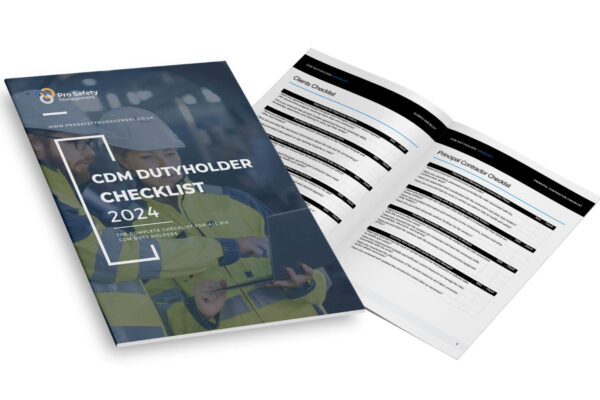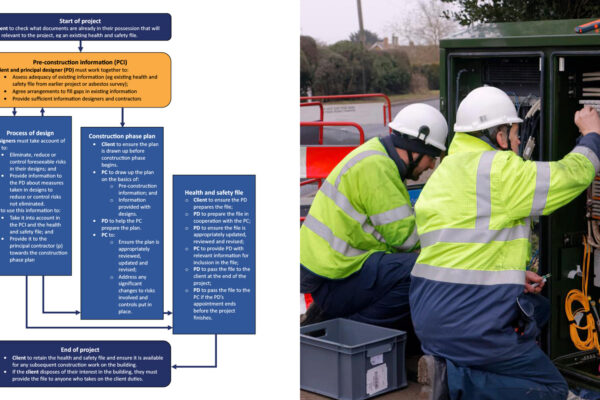Who is responsible for workplace Health and Safety?
If you are thinking about what your responsibilities for health and safety are, you are on the right track. Don’t assume it’s up to someone else – everyone has their part to play! Duties and responsibilities will differ depending on the industry you are working in, the size of your organization, and your role. From the highest rank on the executive board, through management to the people on the front line, working together as a team will be the key to making sure everybody is covered..
This post will help you understand who needs to do what, depending on different roles:.
- Employers
- Managers and Supervisors
- Workers
Employers
Let’s start at the top. If you are a business owner, CEO, or on the Board of Executives, it’s up to you to set the culture of health and safety in your organization. You have primary legal (and moral) responsibility to protect the health, safety, and well-being of personnel and any other people who might come into contact with your work.
Not to fear – this doesn’t mean you have to do it all by yourself! Depending on the size of your organization, you can delegate and trust specific areas to reliable managers and supervisors. With the right infrastructure in place, you can simply check in with these people to make sure everything is running smoothly.
How you deal with this responsibility reflects on your leadership style. Is your organizational culture based on fear and accountability, or is it inclusive and collaborative? Is your focus solely on production and output, or are you more people-focused and compassionate? Amy Edmonson’s book The Fearless Organization will help you build a positive work culture in your organization. A people-focused approach is better for everyone involved, as your staff will appreciate being treated with dignity, care, and respect.
As an employer, these are some of the things you will need to make happen:
- Creating a written health and safety policy (legal requirement for companies with more than five employees)
- Displaying health and safety law poster (also a legal requirement, as above)
- Set up a risk assessment procedure
- Appointing competent people to implement procedures
- Doing whatever is ‘reasonably practicable’ to minimise risks – physical, mental and societal
- Providing staff with information on dangers and available protections
- Providing staff with appropriate instructions and training
- Providing an adequate first aid kit
- Consulting employees to get their perspective on health and safety (this can be done either directly, or through elected workforce or trade union safety reps)
It’s a big responsibility, but you can make it work for you! As long as you know what needs to happen to keep your organisation protected, you can get started with handing over the implementation to trusted employees. You can feel positive about working together with your staff to achieve best practice in health and safety, and your organizational culture.
Managers
Ultimate accountability may be at the top, but responsibilities can be filtered down to middle managers and supervisors. As a manager or supervisor, you are in charge of organizing and implementing all health and safety protocol delegated to you from your employer. Everyone should have a general understanding of health and safety, but certain managers may ‘own’ certain areas or risks (e.g., property, occupational health) that will be their specific domain (and responsibility).
As a manager or supervisor, you can expect to be responsible for the following:
- Staying informed and up-to-date with health and safety information
- Conducting risk assessments
- Implementing and maintaining control measures to minimise risks
- Relaying information about risk and control measures to staff
- Providing appropriate information and training to staff
- Relaying information and concerns between your employer and staff
You’re the perfect person to make sure everybody in your workplace is safe and satisfied. Keeping the lines of communication smooth between the different strata of a company is the key to getting things done. Listen to your boss to find out what your exact responsibilities are (aside from the above), and make sure that staff are heard and supported. Working in everyone’s best interest will help you build strong working relationships with everyone.
Employees
You might think that health and safety is in the hands of the decision-makers, but all employees have an individual responsibility to care for health and safety. Whether you are a worker in a factory, a telecoms engineer, or in a professional service, you should do whatever is reasonably possible to minimise risks to yourself or others.
As an employee, you are responsible for:
- Co-operating with your employer and colleagues regarding issues of health and safety
- Caring for own health and safety, and caring not to put others at risk
- Understanding the risk and hazards involved in your workplace
- Following health and safety instructions
- Not interfering with or misusing health and safety equipment
- Telling employers if anything affects ability to work (pregnancy, ill health, medication that affects use of machinery etc.)
- Reporting failings in (faulty equipment, etc.), injuries, strains, and work-related illnesses.
You are an important part of your organization, and you have an impact on how health and safety applies to your working process. It’s up to you to make sure that health and safety works on the ground level, and make the powers-that-be aware when things aren’t working. Be proactive for your own protection, and that of your workmates. You’re all in this together!
So, how does health and safety fit in with your organization? Well, you need to make sure that everybody is doing what they can to make sure your workplace is as safe as possible, and that means communicating and working together. Whatever your level in the company, you need to know what is expected of you, and what you should expect from others. Ask questions, give feedback, delegate as necessary, but don’t pass the buck – everyone has an important role in health and safety!
Are you responsible for a specific area of health and safety in your organization? Leave a comment below if you have any questions!



